It’s been two months since I’ve been back from a whirlwind, six-day, border-to-border excursion to the country of Jordan, and I can’t get it out of my mind, or, I should say, my heart. Yes, it was hard travel; no, I never did adjust to the time change; yes, I’d do it again. My intent is to share some impressions and memories that I will cherish for years to come.
John and Jesus at Bethany Beyond the Jordan
I have visited Israel, referred to as the Holy Land, and with the trip to Jordan I experienced what has often been called “The Other Biblical Land.” In both visits, what impacted me most was the lay of the land. Not much by way of material remains exist either in Israel or in Jordan that date back to the days of the Patriarchs or Moses, or even to the time of Jesus, except the lay of the land. That impressed me once again as our group made its way to the site referred to in the Gospels as “Bethany beyond the Jordan” (John 1:28).
I will never forget standing on the east bank of the Jordan River opposite Jericho. It didn’t take much imagination to look across the plain to see the walled city that Joshua saw, shut up against a host of Jewish invaders who were standing in the exact place where I was standing. I wondered about how the mothers with small children in tow felt on the eve at that crossing. How did the soldiers feel when they realized that this was it—this was the all-or-nothing critical point of no return? Life would be forever altered for the nation after this moment.
I then thought back to the double-blessing that Elisha received from Elijah, and Elijah’s subsequent ascension into heaven. That took place opposite Jericho, on the other side of the Jordan (2 Ki. 2:5ff.), again, at the very place where I was standing. This was indeed holy ground! But Joshua and Elijah are not why the Jordanians have supervised extensive excavations at this site. That is due to the presence and ministry of the one who fulfilled the prophecy of Elijah’s return: John the Baptist.
The biblical name for this place is “Bethany Beyond the Jordan,” a site rich in archaeological remains spanning centuries, which if nothing else, tells the visitor that the Christian church from the earliest of times has deemed this to be the location where John the Baptist conducted his ministry and where he baptized Jesus. The Baptism Site Commission Director, speaking with a fervor that would rival that of a gospel-preaching tent evangelist, repeatedly reminded us that this side of Jordan, not the other side, was where God chose to begin Christianity.
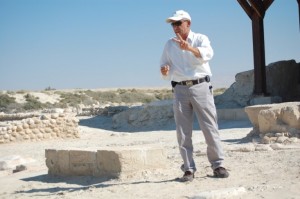
Assistant Commission Director Rustom Mkhjian explains features of various archaeological remains at the Baptism Site on the east bank of the Jordan opposite Jericho. “This is the birthplace of Christianity!”
When you visit here, you’ll be as close to Israel’s border as you can get while in Jordan—twenty or thirty feet is how wide the Jordan is at this point. The contrast will strike you. Across the Jordan stands a gleaming white, multi-million dollar visitor center built to accommodate the masses of people who visit this site, many of whom come prepared to be baptized in the Jordan near the place where their Lord was baptized. On the Jordanian side a more rustic look has been maintained, done so intentionally by the Jordanian government. I will never forget sitting on the bank and dangling my feet in the slow-moving Jordan, trying to imagine John the Baptist and Jesus standing near this very spot.
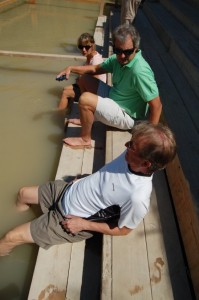
A group of tourists is conducting baptisms on the Israeli side. I (foreground) and a couple of fellow travelers cool off in the muddy river.
“The country of the Gadarenes”
I had other opportunities to ponder the past, one of the most memorable being the afternoon visit to one of the cities of the Decapolis, in Jesus’ time ancient Gadara, now named Umm Qais. Matthew refers to “the country of the Gadarenes” (8:28) as the place where Jesus freed two men from the demon(s) possessing them, which in the end resulted in a herd of demon-possessed swine rushing down a steep bank to their death. We visited the site on a clear day, which revealed that the ancient city was perched on a high cliff, with Syria and the Golan Heights directly opposite, the Yarmuk River immediately below, and the Sea of Tiberius (east-side name for the Sea of Galilee) nearby. I will let the historians and the archaeologists continue their debate about whether or not this was the place where the swine fell to their death (a decent case can be made for it); my thoughts at the time were elsewhere.
I had never sat in a Roman theatre before, or grasped a Roman pillar. I wonder how many sites like this are as open to the public as this one is—no guardrails or ropes keeping visitors at a distance, no guards or officials shadowing your movements, and on this day only our group and another small one. I left our group to take some photos on my own. I entered the theater through ancient, arched walkways and sat down alone, wondering about the people who had sat in this very seat. What event brought them here? What did they see; what did they hear? I marveled at the construction of the individual seats, carved so precisely that the joints between them would not have been noticeable. Sitting in such a place and touching Roman-era pillars proudly standing after millennia, produced an unexpected emotion mixed of wonder, awe and joy.
We arrived at Pella later in the day than we had hoped. I would love to return to that place and stay in the bed-and-breakfast on whose patio we lingered in the late afternoon viewing below us the ancient ruins of another city of the Decapolis. We didn’t have time to wander down among the ruins, but I could see a family of locals sitting there, enjoying the cool of the evening. What’s so special about Pella? Besides being one of the towns that Jesus likely visited while in the region of the Decapolis (Mark 7:31), Eusebius, the fourth century church historian, reported that Jesus’ followers did as he told them, escaping “to the mountains” as they saw Jerusalem surrounded by her enemies (Luke 21:20-21). He reports that they fled to Pella for their safety while Rome attacked and destroyed Jerusalem.
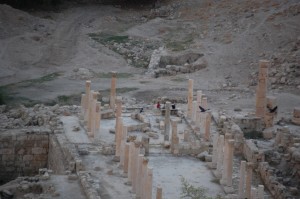
Looking down on ruins at Pella dating back to the Roman era. Eusebius reported that Jewish Christians fled to this area ahead of the invading Roman army that destroyed Jerusalem in AD 70.
Petra: One of the Seven New Wonders of the World
Then, of course, Petra—what words can describe it? We spent an afternoon at one of the Seven New Wonders of the World; we would have needed a whole day to take it all in. “Indiana Jones and the Last Crusade” made the centerpiece of this site, The Treasury, familiar to a younger generation. But while the most famous of the structures, The Treasury is but a small part of many square miles of tombs—yes, tombs. Despite rumors to the contrary, The Treasury never was a repository for untold wealth. For me, the connection to the Bible was not that it was the home to the Nabataean King Aretas IV (2 Cor. 11:32), nor that it lie in the region of ancient Edom, but that its monuments sharply contrasted with my view of death as a temporary state from which we will be delivered by the resurrection of our bodies. Cemeteries don’t have much interest to me.
These were all tombs—the Nabataeans didn’t have their dwellings here; it was a vast cemetery. I wondered at this as I have wondered about the pyramids of Egypt. The crowning achievements of these ancient cultures, the ones lasting through time, were dwellings for their dead. The skill, time, effort and cost required to carve these tombs out of sheer rock cliffs is beyond my comprehension. I may question the worldview assumptions that would lead a culture to create such lasting monuments to the dead, but I am in awe of the creative genius of mankind, made in the image of God, to accomplish such feats as these.
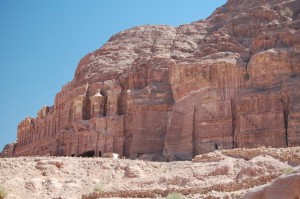
Ancient Petra is far more than its centerpiece, The Treasury (above). It is a wide open area featuring high cliffs whose vertical faces have been carved, like The Treasury and the cliff here, to house the dead.
A Magical Night in Bedouin Country
Our tour guide knew what he was doing. You visit Petra mid-day so you can catch the sun’s rays on the façade of The Treasury. You go from there to Wadi Rum so you can be there when the sun sets. What is Wadi Rum? For movie aficionados, it’s the location for the filming of Lawrence of Arabia. For the rest of us, it is unspoiled Bedouin country, a vast area that borders Saudia Arabia and whose landscape is similar to pictures that I have seen of Monument Valley in the Four Corners area of the southwest. Vast red-rock crags and plateaus rise hundreds, some thousands, of feet up from the sandy floor–four-wheeled desert vehicle country.
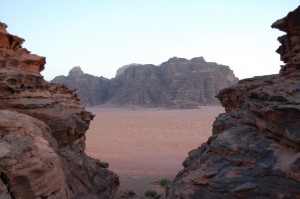
The beautiful landscape and rock formations of Wadi Rum, a vast area in the south of Jordan that borders Saudia Arabia. The movie Lawrence of Arabia was filmed at this site.
The Magical Night began with the setting sun casting a reddish glow on already crimson-colored rock. We had left the bus back at the visitor center and traveled out miles into the vast expanse, sitting in the back of four-wheeled “jeeps” (converted Toyota pickups). We climbed around on the rocks where we could and waited for sun to touch the horizon. Camera shutters sprang into action, capturing the unparalleled beauty of the landscape.
The Magical Night climaxed at a made-for-tourists Bedouin camp, complete with in-the-sand baking of tender meat dishes, and that after the all-you-can-eat, first-course buffet of vegetable dishes and bread typical of all our meals while in Jordan. Our gracious Bedouin hosts entertained us with music and dancing—Arab style—with the more adventurous tourists joining the celebration. Before we left, we were shown the tents on the perimeter of the camp designed for overnight guests. It was 10:00 at night, the Milky Way was on full display, the air was warm, and I was tired; how I wished we had planned to spend our night there instead of at our hotel.
A Glorious Day of Rest at the Bottom of the Earth
Not once during the hectic week had we stayed in just one place for a full day. The last day was the exception, planned as a time of rest before the journey back home. We spent the day at a resort on the shore of the Dead Sea. I would have loved to have spent a week there, with my wife, of course: world-class accommodations, including an outdoor spa, an infinity pool, first-class meals, and of course, direct access to the lowest point on earth, the Dead Sea. If you have never floated in this sea or in the Great Salt Lake, it’s hard to comprehend how difficult it is to hold yourself upright in the water, feet pointing down, as you would in a swimming pool. You just can’t do it; you immediately bob to the surface and stay there. One of my favorite images of the Dead Sea is a man floating with an umbrella in one hand (the sun will blister you!) and a book in the other.
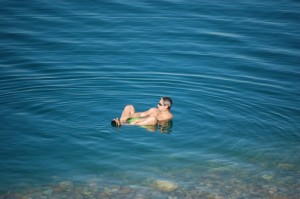
You don’t swim in the Dead Sea; you float. Don’t get the water in your eyes, ears or mouth; even the slightest scratch on your skin will sting. Enjoy a mud bath on the shore while you’re at it!
My fondest memory—the gracious Jordanian people
Jordan has its arms wide open to American tourists. I have a deep appreciation for the Jordan Board of Tourism for making this trip possible for me and ten other evangelical Christian journalists. Everywhere we went we were warmly welcomed, and this included out-of-the way areas in the cities and towns that we visited, not just the usual tourist-visited areas. Christians, by the way, are not merely tolerated in this predominantly Islamic nation; their presence is valued. Jordan remains one of the closest allies to the United States in the region.
I will not forget the gracious help of those sitting on the street outside their business enjoying a cool evening during our struggle to get Behemoth (Bus of Biblical Proportions) maneuvered around a tight corner on a narrow street in Amman. This turned into a Community Project before it was done, and not once did I hear an impatient horn blare from motorists backed up for blocks.
I will always appreciate the kind, thoughtful, of-course-I-understand response of the parking attendant out in front of the Dead Sea resort when I asked him where the Dead Sea was. (Alright, it was night when we pulled in and I was turned around in my directions.)
I am thankful for the cheerful young man who was patient enough to explain to a couple of American tourists lost in Amman’s labyrinth of side-streets, that the hotel we couldn’t find was just up the street.
I will remember the graciousness of the President of the Jordan Evangelical Theological Seminary, who set apart an entire afternoon to entertain a couple of tourists and answer questions about his ministry of training Arab-speaking believers for the work of the Gospel ministry.
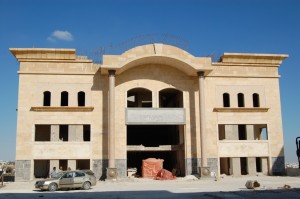
One of two similarly sized buildings that will house JETS—Jordan Evangelical Theological Seminary, led by Dallas Seminary grad Dr. Imad N. Shedaheh. The seminary outrew its former rented location in Amman and is currently moving into this new, multi-million dollar facility.
Finally, I cannot express enough my gratitude for the Jordan Tourism Board and its American representative, Christine Moore, whose assistance from beginning to end made this an unforgettable journey.
I think if I dream hard enough, I’ll find my way back to Jordan!

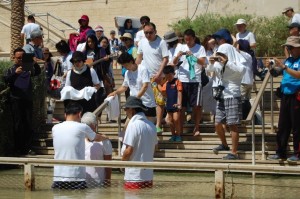
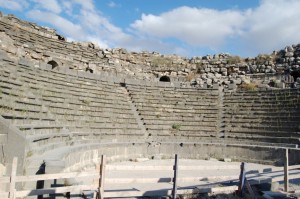
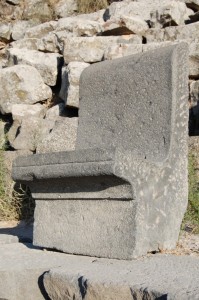
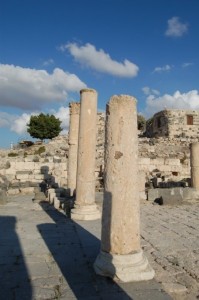
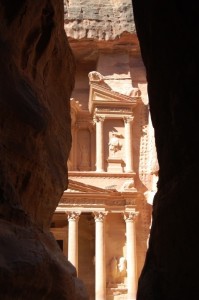
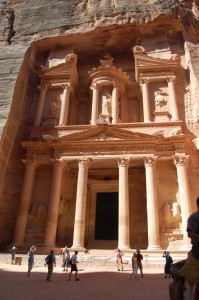
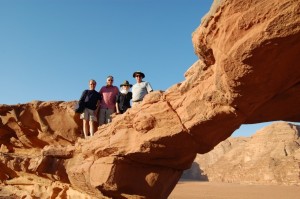
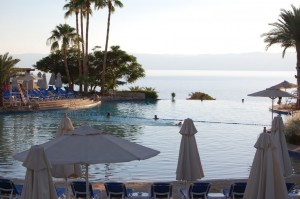
Thanks, Mark for the tour of Jordan. I really appreciate the information and the way you shared it. Teaching an Analysis of the Pentateuch class this week I learned that word that describes the wrestling match of Jacob and the LORD and the name Yarmouk, for the river which you visited, are probably from the same root. Did you happen to see where this event would have taken place? Do you have any insights on this? Or is this something you can check out for me on your next visit to the Jordan? Yours for His glory, Jerry
Wonderful piece- love reliving all of those great experiences!
There’s certainly a lot to learn about this subject.
I like all of the points you have made.
Thanks for sharing this Dr. J!